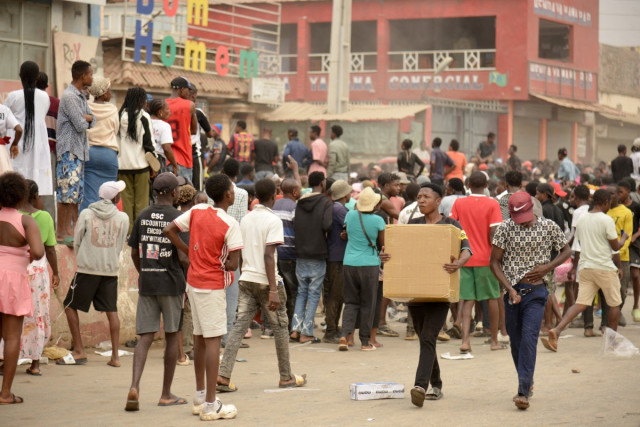Two days of violence and looting in Angola during a demonstration against a fuel price increase resulted in the deaths of 22 individuals, according to government officials on Wednesday, as a fragile calm returned to the capital.
The unrest began on Monday, the first day of a strike organized by taxi drivers protesting the fuel cost rise implemented on July 1 in the oil-rich nation, where a large portion of the population lives in poverty.
This marked some of the most severe disturbances in recent years in the Portuguese-speaking southern African country, which has been ruled by the MPLA party since 1975.
Luanda and several other cities witnessed sporadic gunfire on Monday and Tuesday as people looted stores and clashed with law enforcement.
“We mourn the 22 deaths, including one police officer,” said Interior Minister Manuel Homem during a press briefing at a Council of Ministers meeting led by President Joao Lourenco. Almost 200 individuals sustained injuries during the turmoil, he added, while over 1,200 people were arrested.
The unrest was characterized by widespread looting, with individuals breaking into supermarkets and warehouses to steal food and other goods. Homem noted that 66 shops were damaged. On Wednesday, the streets of Luanda were tense and mostly deserted, though some people lined up outside gas stations and stores, as reported by AFP journalists.
There was a significant presence of security personnel. Although many shops were still closed, public transit gradually resumed in certain areas following a two-day halt.
As protests extended beyond the capital, a statement issued after the ministers' meeting indicated that vandalism and rioting had “created a climate of widespread insecurity.”
It warned that “elements with criminal intentions” had turned the protest into a “security threat.” In the southern city of Lubango, police confirmed that a police officer shot and killed a 16-year-old boy on Tuesday.
The teenager was part of a group trying to storm the headquarters of the ruling MPLA party, according to a statement. – Sequence of protests – The strike was the most recent in a series of demonstrations this month after fuel prices were increased from 300 to 400 kwanzas ($0.33 to $0.43) per liter on July 1.
The government’s decision to reduce its substantial fuel subsidies reportedly followed the International Monetary Fund's calls for increased public spending on health and education.
However, this move has upset many in the nation of 36 million, which is already grappling with an inflation rate of around 20 percent and an unemployment rate nearing 30 percent.
High inflation and limited economic growth are expected to keep poverty rates elevated, estimated at around 36 percent by 2026, highlighting the necessity for a more robust social safety net and increased development expenditure,” according to the World Bank.
During a demonstration of about 2,000 people in Luanda on Saturday, protesters criticized the fuel price hike and displayed signs denouncing MPLA “corruption” and expressing dissatisfaction with Lourenco’s governance, who was re-elected for a second five-year term in 2022. There were similar protests on the two weekends prior.
In a joint statement issued on Wednesday, the opposition parties UNITA and Bloco Democratico declared that Angola was facing a “serious economic and social crisis” resulting from government policies “disconnected from the country’s reality.”
Amnesty International and other human rights organizations have accused the police of employing excessive force against protesters in Angola, which endured a civil war from 1975 to 2002 and nearly four decades of repression under former president Jose Eduardo dos Santos.
In January 2021, police reportedly killed at least 10 individuals after opening fire on an anti-poverty demonstration in the diamond mining town of Cafunfo, located approximately 750 kilometers (470 miles) east of Luanda, according to Amnesty.




















